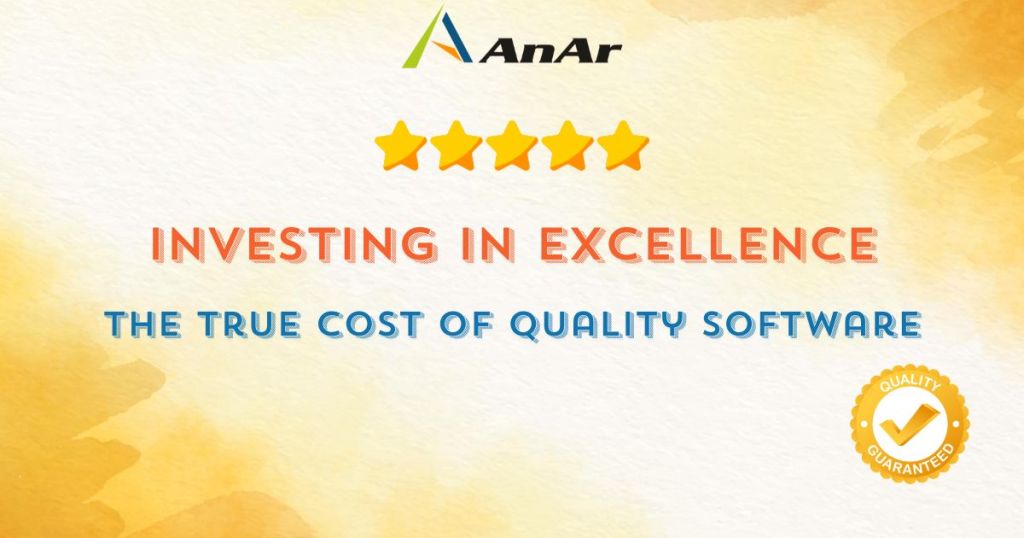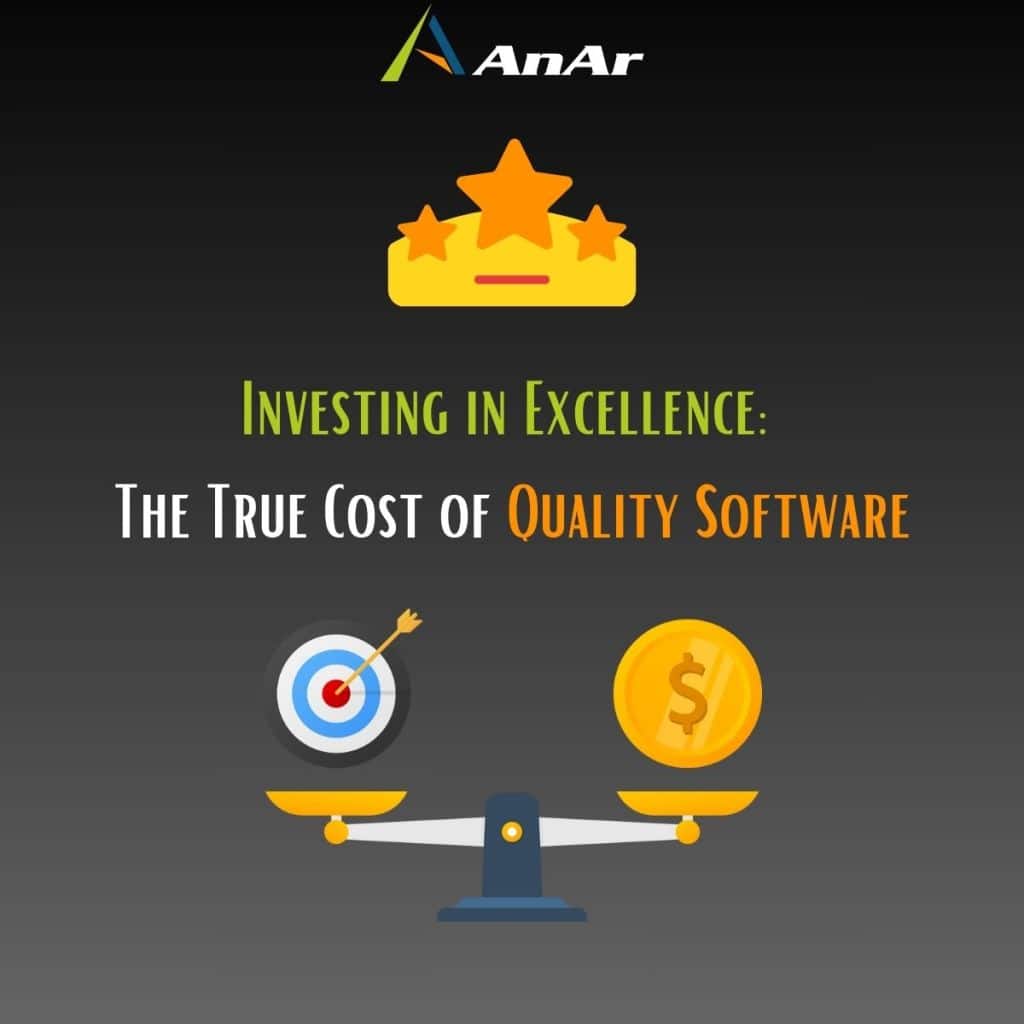Quality is now the linchpin of success in the rapidly evolving Information Technology (IT) industry. In this digital age, where businesses heavily depend on software solutions, delivering top-notch products goes beyond meeting functional requirements. It involves crafting software that excels in reliability, efficiency, security, and user experience — a commitment that distinguishes a company in a fiercely competitive market.
As technology becomes integral to business, executive scrutiny of IT intensifies. IT is now a strategic force, not just a support function. Quality in software development is pivotal, impacting technical aspects and broader business outcomes such as finances, customer satisfaction, and efficiency. This emphasis on quality aligns with the overarching theme of ROI in software development, where organizations seek tangible benefits. The intersection of quality, heightened scrutiny, and ROI underscores our exploration into the Cost of Quality (COQ).
What is the Cost of Quality (COQ) in Software Development?
The Cost of Quality (COQ) in software development is a holistic metric that measures the financial investment needed to ensure optimal product quality. It encompasses both proactive measures to ensure good quality and reactive measures to address poor quality. COQ extends beyond the immediate expenses associated with development and includes the costs related to preventing defects, detecting issues, fixing internal failures, and managing external failures after the product reaches the client.
Why it is a must to build Quality Products?
Imagine crafting a meticulously designed spaceship, only to have it crash on Mars due to a single faulty bolt. In the world of software development, that tiny bolt translates to a bug — a seemingly insignificant flaw that can wreak havoc on project timelines, budgets, and brand reputation. This, my friends, is the price of poor quality, a burden heavier than Thanos’ Infinity Gauntlet in today’s competitive IT landscape.
Let’s take a real-world example: the 2012 Knight Capital Group trading fiasco. A malfunctioning algorithm triggered erroneous trades, costing the company a staggering $440 million — 4 times its 2011 net income! That one bug transformed a financial powerhouse into a cautionary tale, echoing the harsh reality of neglecting software quality.
How is the cost of quality calculated?
Here’s the formula for COQ (Cost of Quality)
- COQ = Cost of Control + Cost of Failure of Control
- COQ = Cost of Good Software Quality + Cost of Poor Software Quality
In software development, cost of quality is calculated by combining the Cost of Control (investments made to ensure good quality software) and the Cost of Failure of Control (expenses incurred due to poor quality software).
This formula provides a holistic view of the resources and efforts invested in preventing defects and addressing issues throughout the software development life cycle. Striking the right balance between these two cost components is crucial for optimizing the overall cost of delivering quality software.
Further Breakdown of COQ in software development
Cost of Good Quality (COGQ) = Prevention Costs + Detection Costs
- Prevention Costs: These are expenses incurred to prevent defects from occurring in the first place. Examples include continuous training for developers, designing code that is easy to maintain, adhering to coding standards, and ensuring client approval of requirements before coding.
- Detection Costs: These encompass the expenses associated with detecting and addressing defects before the product reaches the client. It includes the creation of test designs and cases, setting up testing environments, defect tracking, and the use of automation scripts.
Cost of Poor Quality (COPQ) = Internal Failure Costs + External Failure Costs
- Internal Failure Costs: These are the costs incurred in fixing defects during internal checks before the product is delivered. Examples include re-work, re-testing, bug fixing, and re-design efforts. Internal failure costs also cover issues such as resource unavailability, network failures, and test environment crashes.
- External Failure Costs: These costs arise after the product has been delivered to the client and defects are reported. They include expenses related to processing customer complaints, product returns, warranty claims, legal implications, and damage to the company’s reputation in the market.
Understanding Software Quality
To understand software quality, we must understand both Functional and non-functional quality!
What is the Distinction Between Functional and Non-Functional Quality?
Understanding software quality requires recognizing the dual nature of its attributes. Functional quality pertains to the software’s ability to perform tasks as specified in the Software Requirements Specification (SRS) document. On the other hand, non-functional quality relates to aspects such as performance, usability, reliability, and security.
Functional Quality
Ensures the software performs the tasks it’s intended to do, as specified in the requirements.
Focus: Accuracy, completeness, and conformance to requirements.
Real-life examples:
- An e-commerce website accurately processes orders and payments.
- A banking app successfully transfers funds between accounts.
- A video conferencing tool enables clear audio and video calls.
- A fitness tracker accurately measures steps and heart rate.
Non-Functional Quality
Focuses on how well the software performs its tasks, encompassing aspects like performance, usability, reliability, and security.
Focus: User experience, performance under load, security against threats, and overall dependability.
Real-life examples:
- A social media app loads quickly and smoothly, even with millions of users.
- A navigation app provides clear, accurate directions in real-time.
- A healthcare app safeguards patient data with robust security measures.
- A gaming platform delivers immersive experiences with high-quality graphics and minimal lag.
Both dimensions are essential, and achieving a balance between them is critical for delivering a comprehensive and high-quality software product.
What are the costs of poor quality (COPQ) in software development?
The costs of poor quality (COPQ) in software development encompass various expenses that arise from releasing defects into production. These costs can be categorized into different areas, as highlighted in the provided content:
The Cost of Poor Quality (COPQ) encompasses all the expenses incurred due to software defects, impacting both development and QA budgets.
Let’s break down how COPQ manifests in these areas:
Software Development Costs
- Rework and Repair: Fixing bugs after release is significantly more expensive than addressing them early in the development cycle. Rewriting code, fixing integration issues, and patching vulnerabilities can easily double or triple the initial development cost for that feature.
- Extended Development Time: Buggy software often leads to missed deadlines and delays in product launches. This translates to increased labor costs, overtime pay, and potential revenue losses if competitors get to market first.
- Technical Debt: Accumulating unaddressed defects creates technical debt, a burden that weighs down future development efforts. Maintaining and working around buggy code slows down development, reduces team productivity, and hinders innovation.
QA Costs
- Reactive QA: Traditional, reactive QA approaches rely heavily on manual testing after development is complete. This results in a higher chance of bugs slipping through the cracks and being discovered later, resulting in costly rework.
- Predictive QA: Proactive QA goes beyond prediction and actively embeds quality into the entire development process. It involves:
- Collaborating with developers to define quality standards and test cases early on.
- Implementing continuous testing and automation throughout the development cycle.
- Conducting risk-based testing to prioritize critical areas.
- Promote a culture of quality within the team.
- Providing early feedback to developers to address issues before they become costly to fix.
Examples of COPQ across the Software Development Lifecycle
- A banking app with a critical security vulnerability could lead to multiple data breaches, regulatory fines, and reputational damage, costing millions in remediation and lost customer trust.
- A retail website with frequent crashes and performance issues could frustrate customers and drive them away, resulting in lost sales and brand erosion.
- An IoT device with software bugs could malfunction and cause physical damage or safety hazards, leading to recalls, lawsuits, and potential harm to users.
Why should you invest in quality of the product and what is needed to ensure it?
The pursuit of quality in product development is not merely an aspiration; it is a strategic investment with demonstrably positive outcomes. While initial costs may appear higher, the long-term benefits far outweigh the short-term considerations.
Investing in quality fosters a robust and reliable product, minimizing defects and service disruptions. This, in turn, provides better customer satisfaction and brand loyalty, leading to organic growth through positive word-of-mouth and repeat business. A strong reputation for quality establishes a competitive advantage, commanding premium pricing and insulating your market share from price-centric competitors.
Achieving this level of quality necessitates a meticulous approach. Assembling a skilled development team, or partnering with an experienced software development company, is paramount. Lookout for professionals with a proven track record of delivering high-performance systems while optimizing resource utilization. Their expertise in power quality management will translate into cost-effective solutions, minimizing infrastructure overheads and maximizing energy efficiency.
By prioritizing quality as a core value, you embark on a path towards sustainable success. Your product becomes a testament to your unwavering commitment to excellence, attracting loyal customers and solidifying your presence within the market. Remember, in today’s competitive landscape, quality is not a luxury; it is the cornerstone of an enduring enterprise.
Conclusion
In summary, understanding the balance between the Cost of Quality (COQ) and the Cost of Poor Quality (COPQ) is crucial in software development. This blog has highlighted how strategic investments in quality not only reduce long-term costs but also enhance customer satisfaction and business reputation. By prioritizing both functional and non-functional aspects of software, organizations can navigate the complex landscape of IT development, ensuring robust, efficient, and secure software solutions.
In this context, AnAr Solutions stands as a prime example of excellence in software quality management. With our deep industry expertise and commitment to innovative practices, we help businesses navigate their software development journey effectively. Our approach, focusing on prevention and meticulous quality control, ensures that our clients receive not just software, but solutions that drive their success in the market. Interested in elevating your software quality and efficiency? Contact AnAr Solutions for more insights and expert guidance. Let’s build something remarkable together.







